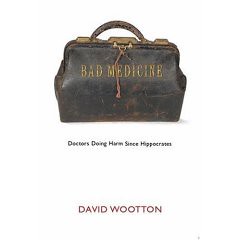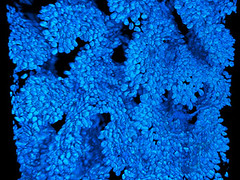In the last meeting of the “Towards a new materialism” reading group (at Medical Museion last Thursday) we discussed Sharon Macdonald’s Politics of Display. We touched upon several interesting topics, including the notion of democratising museums, and at one point in the (as usual very lively) discussion I wondered if anyone had thought about the possibility of a WikiMuseum.
It turned out that nobody had (and neither had I before the meeting). Now I’ve done a Google search on “Wikimuseum” and to my surprise I didn’t find anything useful. (There is an obscure hobby site at http://www.wikimuseum.org/ which started last spring with almost no content; and there is a dormant http://www.wikimuseum.com/ for sale if you make a “serious offer”.)
I think the notion of a WikiMuseum could be useful, if only for exploring the limits of the idea of democratising museums. I’m not thinking of websites with digitalised photos of objects which anyone can contribute to. There are already a number of such sites, e.g. Flickr, which could easily be developed into digital web museums.
More radically, a WikiMuseum would not be restricted to digitalised texts and photos, but would also comprise collections of physical objects. For practical reasons, it would probably not be possible to create a WikiMuseum at one single physical site, but it would have to be located at many sites simultaneously (physically distributed).
Imagine, for example, a WikiToyMuseum, containing the combined human heritage of toys. Not only toys in museum institutions, but also toys that have been gathered in millions of homes around the world: accumulations of generations of family toys from past decades, even centuries. If the items are still used to play with, or if just stoved away in the attic, they do not constitute part of the WikiToyMuseum. But at the very moment they are given away or sold to a museum institution they are publicly ‘museumised’; likewise if a private owner consciously orders, describes and/or displays them at home, they become privately ‘museumised’. In my vocabulary, they are then turned into parts of a potential WikiToyMuseum.
To be a true WikiMuseum there would have to be open access to all the distributed physical collection sites. I guess this is the tricky part of the realisation of a WikiMuseum. Would private toy owners accept opening the their doors to potential visitors? Well, in the art museum world, the borders between public and private collections are already somewhat fuzzy; for example, many private art collectors let museum institutions know what they own so that the items can be borrowed for exhibitions.


